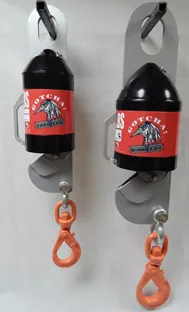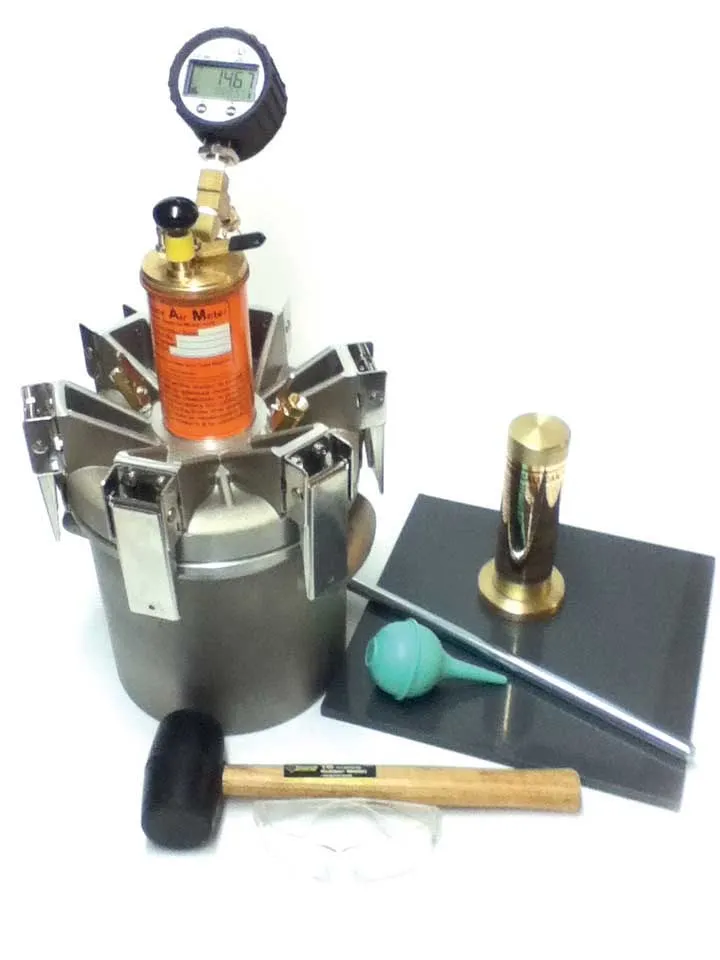With a brief but loud safety warning sound, one of the latest construction equipment inventions for sling operations drops its load, in this case a very light load.
Daniel Hebert, vice president of the Canadian firm Crane Equipment.ca, was recently demonstrating the aptly-named GOTCHA! device that the Quebec-based company will be highlighting at the Intermat exhibition in Paris in April.
GOTCHA! Is an automated sling release that uses a remote control to release loads being moved by crane. With the press
February 11, 2015
Read time: 3 mins

With a brief but loud safety warning sound, one of the latest construction equipment inventions for sling operations drops its load, in this case a very light load.
Daniel Hebert, vice president of the Canadian firm7993 Crane Equipment.ca, was recently demonstrating the aptly-named GOTCHA! device that the Quebec-based company will be highlighting at the Intermat exhibition in Paris in April.
GOTCHA! Is an automated sling release that uses a remote control to release loads being moved by crane. With the press of a button, the device releases one end of a sling or chain once the load is safely in the required position.
"Until now, you had to send workers to get the load off the crane, which remained a risky manoeuver,” said Hebert. But with GOTCHA!, everything is done automatically, accurately and safely."
The device looks like an artillery shell but that is for a very good reason, explains Hebert. Because GOTCHA! can be attached to loads that are sometimes raised great heights, the curved surface of GOTCHA doesn’t catch the wind, thus avoiding the problem of a spinning load.
Two models are available for loads of up to 2.25tonnes and 4.5tonnes. A third model, up to 18.12tonnes, is in being designed.
GOTCHA! comes with two re-chargeable 12-volt batteries and each battery has been tested for up to 200 triggers. A UL certified charger is also included.
The remote control has a range of up to around 305m. It is also programmable using more than 60,000 codes, meaning it can be tweeked for operating in an environment where there is a high risk of radio interference affecting the remote. A flashing light indicates when the remote’s 9-volt batteries need replacing.
Before the device is “fired”, a signal alerts workers in the area to the impending release of a load. GOTCHA! also has positioning sensors for the ejector plates and a weight sensor which prevent accidental firing – the release of the load.
Hebert said GOTCHA! is most useful where extreme accuracy of placement is needed, such as positioning roof trusses or the lowering of worker cages into narrow holes for foundation investigation or road stabilisation.
GOTCHA, whose patent is pending, is already used in several Canadian provinces and US states and the company is now targeting the European market, which is its reason for being at Intermat in April.
Crane Equipment.ca, located in the Montreal suburb of Varennes, designs, manufactures and distributes lifting equipment.
Daniel Hebert, vice president of the Canadian firm
GOTCHA! Is an automated sling release that uses a remote control to release loads being moved by crane. With the press of a button, the device releases one end of a sling or chain once the load is safely in the required position.
"Until now, you had to send workers to get the load off the crane, which remained a risky manoeuver,” said Hebert. But with GOTCHA!, everything is done automatically, accurately and safely."
The device looks like an artillery shell but that is for a very good reason, explains Hebert. Because GOTCHA! can be attached to loads that are sometimes raised great heights, the curved surface of GOTCHA doesn’t catch the wind, thus avoiding the problem of a spinning load.
Two models are available for loads of up to 2.25tonnes and 4.5tonnes. A third model, up to 18.12tonnes, is in being designed.
GOTCHA! comes with two re-chargeable 12-volt batteries and each battery has been tested for up to 200 triggers. A UL certified charger is also included.
The remote control has a range of up to around 305m. It is also programmable using more than 60,000 codes, meaning it can be tweeked for operating in an environment where there is a high risk of radio interference affecting the remote. A flashing light indicates when the remote’s 9-volt batteries need replacing.
Before the device is “fired”, a signal alerts workers in the area to the impending release of a load. GOTCHA! also has positioning sensors for the ejector plates and a weight sensor which prevent accidental firing – the release of the load.
Hebert said GOTCHA! is most useful where extreme accuracy of placement is needed, such as positioning roof trusses or the lowering of worker cages into narrow holes for foundation investigation or road stabilisation.
GOTCHA, whose patent is pending, is already used in several Canadian provinces and US states and the company is now targeting the European market, which is its reason for being at Intermat in April.
Crane Equipment.ca, located in the Montreal suburb of Varennes, designs, manufactures and distributes lifting equipment.








